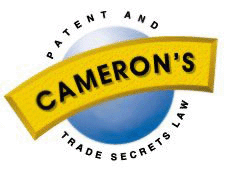
Rodi v. Wienenberger
citation(s): (1969) R.P.C. 367 (H.L. per Lord Upjohn)
 |
Rodi v. Wienenbergercitation(s): (1969) R.P.C. 367 (H.L. per Lord Upjohn) |
copyright 1997 Donald M. Cameron, Aird & Berlis
"The claim must be read through the eyes of the notional addressee, the man who is going to carry out the invention described. There are many authorities on this but it is unnecessary to review them for I have already said enough to show that in my view, this document must be read through the eyes of the common man at his bench."
At p. 391:
"First, the question as to whether the relevant claim has been infringed. This is purely a question of construction of the claim read as a matter of ordinary language, in the light of the complete specification taken as a whole; but the claim must be construed as a document without having in mind the alleged infringement."
At p. 391:
"What is not claimed is disclaimed."
At p. 391:
"In considering the claim the court must ascertain what are the essential integers of the claim; this remains a question of construction and no general principles can be laid down....
"Secondly, the essential integers having ascertained, the infringing article must be considered. To constitute infringement the article must take each and every one of the essential integers of the claim. Non-essential integers may be omitted or replaced by mechanical equivalents; there will still be infringement. I believe that this states the whole substance of the (pith and marrow) theory of infringement."
At p. 391:
"Non-essential integers may be omitted or replaced by mechanical equivalents; there will still be infringement. I believe that this states the whole substance of the (pith and marrow) theory of infringement."
(1959) 19 Fox Pat. C. 49 at p. 53.
"The question then arises as to whether, on the issue of utility, only the claims must be looked at or whether the specification must be read as a whole.
The answer is to be found in Fox - Canadian Patent Law and Practice - 3rd Ed. Vol. I, p. 301:
"The invention must ... be useful as specified and for the purpose stated in the specifications and claims (Von der Linde v. Brummerstaedt & Co. (1909), 26 R.P.C. 289)"
As to the meaning of "utility as specified", Fox, at p. 300, borrows the following explanation from Bennett J. in Unifloc Reagents Ltd. v. Newstead Colliery Ltd. [1943] R.P.C. 165 at 184:
"If when used in accordance with the directions contained in the specifications, the promised results are obtained, the invention is useful in the sense in which that term is used in patent law".
"The question to be asked is whether, if you do what the specification tells you to do, you can make or do the thing which the specification says that you can make or do."
"It seems to me evident that the first judge erred in restrictively construing the specification and in considering only the claims in order to determine whether the device was operative and therefore useful."
Return to:
Cameron's IT Law: Home Page; Index
Cameron's Canadian Patent & Trade Secrets Law: Home Page; Index